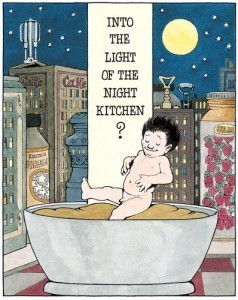Sendak, Seuss, Silverstein and the Shock of Subversion
Pamela Paul writes about the eccentric styles of authors whose work marked a seismic shift in picture books for children:
Once upon a more staid time, the purpose of children's books was to model good behavior. They were meant to edify and to encourage young readers to be what parents wanted them to be, and the children in their pages were well behaved, properly attired and devoid of tears. Children's literature was not supposed to shine a light on the way children actually were, or delight in the slovenly, self-interested and disobedient side of their natures.
Seuss, Sendak and Silverstein ignored these rules. They brought a shock of subversion to the genre — defying the notion that children's books shouldn't be scary, silly or sophisticated. Rather than reprimand the wayward listener, their books encouraged bad (or perhaps just human) behavior. Not surprisingly, Silverstein and Sendak shared the same longtime editor, Ursula Nordstrom of Harper & Row, a woman who once declared it her mission to publish "good books for bad children."
http://www.nytimes.com/2011/09/18/books/…
I'd be curious to know what she thinks of Heinrich Hoffmann's Struwelpeter (1845) , subtitled Funny Stories and Droll Pictures. In it, the badly behaved, slovenly, and transgressive kids are mocked and punished (Konrad the thumb-sucker has his thumbs sliced off). Perhaps a bad book for good children?
And does Silverstein belong in this trio? Paul's essay made me wonder if there might be a touch of irony to The Giving Tree, one of the most hated books in the canon of children's books, right up there with Robert Munsch's Love You Forever.
Maria Tatar's Blog
- Maria Tatar's profile
- 316 followers




